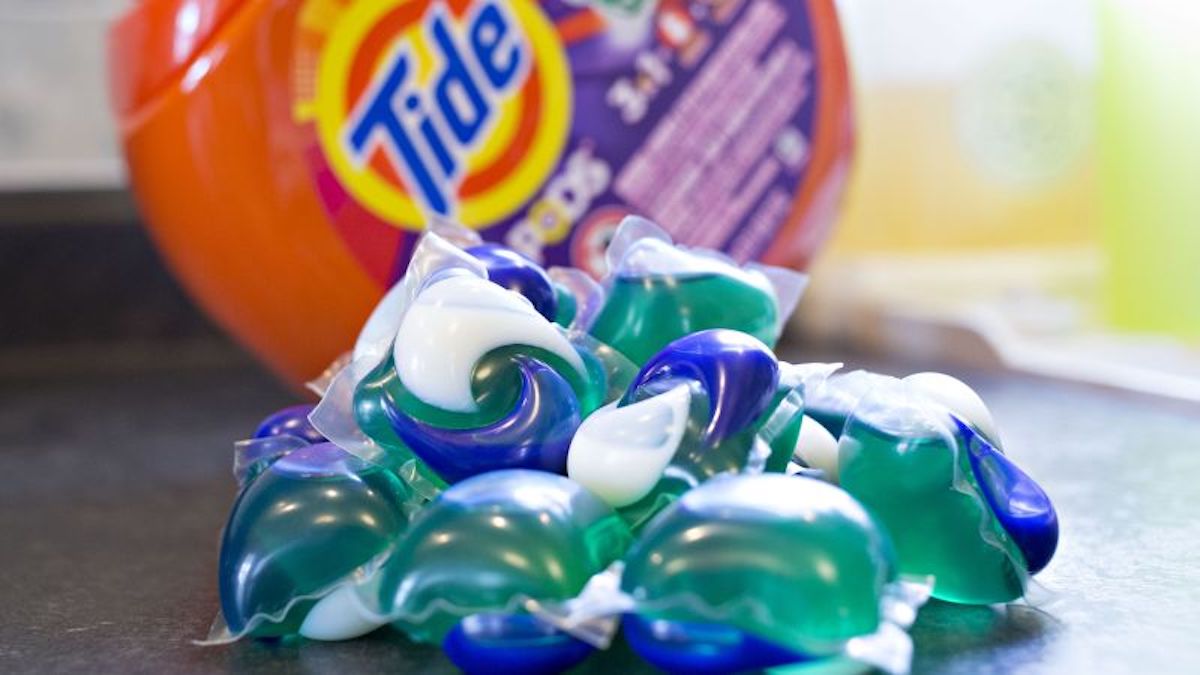New York () — In 2004, Procter & Gamble was looking for a hit.
Two decades had passed since the consumer products conglomerate introduced Tide liquid laundry detergent, revolutionizing the way people washed clothes. Cheaper rivals and store brands were wresting dominance from Tide.
P&G also found that consumers were tired of lugging around bulky 3-kilogram bottles of Tide detergent, measuring and pouring liquid detergent into a cup, and then cleaning up the inevitable spills. Doing laundry had become a dreaded chore.
Tide Pods’ signature three-chamber design. The product has been one of Procter & Gamble’s most successful innovations.
The company needed to develop something so different that it would convince consumers to stop using liquid detergent. He set about trying to develop a palm-sized, liquid-filled detergent pod that would grab the attention of shoppers on the shelf and make doing laundry a little more exciting.
In 2012, after eight years, P&G finally introduced Tide Pods in the United States, a single pack of blue, orange and white concentrated detergent.
The Tide Pods were a huge hit. But P&G created a product so visually appealing and compelling that it inadvertently became a public health risk.
Interrupting the wash
Tide, which hit the US market in 1946 as the first synthetic detergent, has long been one of P&G’s biggest brands on a list that includes Gillette, Pampers, Dawn, Bounty and other staples in American households.
Tide came to dominate the detergent industry and was at one point P&G’s largest American brand. Within the company, working at Tide has been a coveted job and often a stepping stone to the executive suite.
Tide Pods weren’t P&G’s first attempt at developing a laundry pod.
In 1960, P&G released Salvo, a compression-fed tablet. It was on the market for about five years. In 2000, P&G introduced Tide Tabs, tablets filled with powdered detergent. But the company withdrew them from the market two years later: the powder tablets did not always dissolve completely and only worked in hot water.
“It didn’t even come close to hitting the targets,” a former P&G employee later told The Wall Street Journal.

Tide Pods launched in 2012. Here, former CEO Bob McDonald shows off an earlier version of Tide Pods’ clear package design.
P&G’s next attempt, creating a liquid tablet that would eventually become Tide Pods, was an enormously difficult engineering task. It involved more than 75 employees and 450 different product and packaging sketches. Thousands of consumers were surveyed.
The goal was to “interrupt the ‘washing cycle'” among consumers who “automatically pick up” the detergent, he told New York Times P&G’s director of marketing for fabric care in North America. “We want to shake up this category with innovation.”
On the 2012 Academy Awards telecast, P&G featured Tide Pods in a commercial bright and vibrant with the slogan “Pop In. Stand Out.”, (which translates as “Pop Up. Stand Out”). The ad encouraged customers to “pop” the Tide Pods into the washing machine and watch their clothes “burst” with shine. P&G spent $150 million on an advertising campaign to launch Tide Pods to consumers.
“Food Imitating Products”
Within a year, Tide Pods surpassed $500 million in sales in North America and controlled about 75% of the market for single-dose laundry packets, the company said at the time. The product was so successful that other manufacturers rushed to create similar versions.
Tide Pods attracted customers with their lightweight design, a swirl of blue, orange, and white stripes, and a soft, fluffy feel.
Today, it features a patented three-chamber design that separates detergent (the green compartment), stain remover (white), and bleach (blue). P&G did not say why it changed the colors.
Even the Tide Pods packaging was different.
The company developed a clear plastic fishbowl-shaped container that clearly displayed the pods so they would stand out on the shelf. People also liked how the Tide Pods felt in their hands, the researchers found.
The Tide Pods design reflected a long-standing strategy by consumer product manufacturers to design cleaning and personal hygiene products that exhibit food or drink attributes, according to Dr. Frédéric Basso, a professor at the School of Economics and Political Science of London, who has investigated this trendknown as “food imitation products”.
Other examples of this tactic include soda-shaped bottles and labels depicting colorful fruit.
By developing products that link to food, play or other positive experiences, customers are less likely to automatically associate these items with an unpleasant or boring task, Basso said.
“The Tide Pods obviously remind people of food, especially food that has been made to appeal to children,” John Allen, an Indiana University anthropologist and author of “The Omnivorous Mind: Our Minds,” said in an email. Evolving Relationship with Food”. It’s “bite-sized, processed, colorful, with a non-threatening texture, kind of like a cross between a candy and a chicken nugget.”
unintended consequences
But the appearance of the Tide Pods contained an unforeseen threat.
Young children and the elderly with dementia began to put them in their mouths. Two months after the release of Tide Pods, almost 250 cases were reporteds of young children who ate detergent capsules.
P&G quickly responded to security concerns by making packages of Tide Pods more difficult to open, with a double latch on the lid. A year later, the packaging was changed from the original clear plastic that resembled candy bowls to orange packaging. Since then, P&G has made a number of other changes that made Tide Pods packages more child-resistant and improved warning labels.
P&G said accidents involving young children are primarily due to improper custody and access to the capsules, not the color of the capsules. The company pointed to a 2017 study that found color does not play a critical role in accidental exposures to laundry pods.
The company has an ongoing safety campaign on Tide Pods to educate consumers on the proper use and storage of the product, a P&G spokesperson said. Includes advertising and content partnerships with online parenting channels.
Still, laundry detergent pods from Tide and other companies were involved in two deaths and two dozen life-threatening poisonings in 2013 and 2014. US poison control centers received more than 37,000 calls in those years. involving children under the age of six, according to a study.

P&G has developed numerous safety innovations for Tide Pods since 2012.
Between 2012 and 2017, eight deaths were reported before the Consumer Product Safety Commission. Two of the cases were young children and six were adults with dementia.
In 2015, Consumer Reports said laundry pods were too risky to recommend because of their safety concerns.
That year, P&G and other manufacturers adopted voluntary standards for laundry packages with the goal of reducing accidents involving young children. Led by P&G, the makers agreed to keep the capsules in opaque containers, coat them with a bitter or foul-tasting substance, and strengthen them to reduce the risk of them bursting when squeezed.
A P&G spokesman said the standard has led to a sharp decline in the accident rate in recent years, even as more people use laundry packages.
Despite efforts by P&G to make the packaging and design of Tide Pods safer and warn consumers of the risks, a Tide Pods “challenge” quickly spread on social media among teens who dared others to swallow the pods in early 2018. Tide teamed up with then-New England Patriots tight end Rob Gronkowski to air a public service announcement and released a safety campaign on social networks.
At that moment, New York lawmakers they asked P&G to change the design of the Tide Pods to make them look less edible. State lawmakers have introduced a bill that would require all detergent packages sold in New York to be a uniform color that is “unappealing to children.”
But P&G said accidents happen if the product has no color, one color or multiple colors, and there isn’t enough evidence to show that any color is related to safety improvements.
Storing Tide Pods out of the reach of children, the company said, is the most important safety precaution.



![[Img #74664]](https://thelatestnews.world/wp-content/uploads/2024/12/James-Watson-The-controversial-genius-behind-the-double-helix-150x150.jpg)








Add Comment